 W
WJuan Pablo Bonet (c.1573–1633) was a Spanish priest and pioneer of education for the deaf. He published the first book on deaf education in 1620 in Madrid.
 W
WJohn Bulwer was an English physician and early Baconian natural philosopher who wrote five works exploring the Body and human communication, particularly by gesture. He was the first person in England to propose educating deaf people, the plans for an Academy he outlines in Philocophus and The Dumbe mans academie.
 W
WA child of deaf adult, often known by the acronym "coda", is a person who was raised by one or more deaf parents or guardians. Millie Brother coined the term and founded the organization CODA, which serves as a resource and a center of community for children of deaf adults as an oral and a sign language, and bicultural, identifying with both deaf and hearing cultures. Codas must navigate the border between the deaf and hearing worlds, serving as liaisons between their deaf parents and the hearing world in which they reside.
 W
WClosed captioning (CC) and subtitling are both processes of displaying text on a television, video screen, or other visual display to provide additional or interpretive information. Both are typically used as a transcription of the audio portion of a program as it occurs, sometimes including descriptions of non-speech elements. Other uses have included providing a textual alternative language translation of a presentation's primary audio language that is usually burned-in to the video and unselectable.
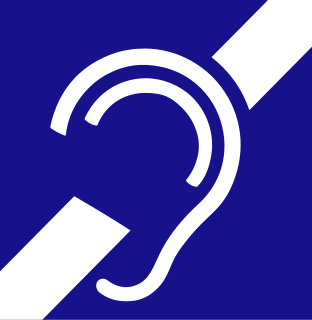 W
WCommunication assistance in Israel, is supplied to the Deaf and Hard of Hearing community in Israel by the Ministry of Social Affairs and Social Services (Molsa), after the demonstrations of The Association of the Deaf in Israel (Acha), which were held from May 5, 2002 until June 12, 2002.
 W
WCongenital sensorineural deafness occurs commonly in domestic cats with a white coat. It is a congenital deafness caused by a degeneration of the inner ear. Deafness is far more common in white cats than in those with other coat colours. According to the ASPCA Complete Guide to Cats, "17 to 20 percent of white cats with nonblue eyes are deaf; 40 percent of "odd-eyed" white cats with one blue eye are deaf; and 65 to 85 percent of blue-eyed white cats are deaf."
 W
WCortical deafness is a rare form of sensorineural hearing loss caused by damage to the primary auditory cortex. Cortical deafness is an auditory disorder where the patient is unable to hear sounds but has no apparent damage to the anatomy of the ear, which can be thought of as the combination of auditory verbal agnosia and auditory agnosia. Patients with cortical deafness cannot hear any sounds, that is, they are not aware of sounds including non-speech, voices, and speech sounds. Although patients appear and feel completely deaf, they can still exhibit some reflex responses such as turning their head towards a loud sound.
 W
WDeaf culture is the set of social beliefs, behaviors, art, literary traditions, history, values, and shared institutions of communities that are influenced by deafness and which use sign languages as the main means of communication. When used as a cultural label especially within the culture, the word deaf is often written with a capital D and referred to as "big D Deaf" in speech and sign. When used as a label for the audiological condition, it is written with a lower case d. Carl G. Croneberg coined the term of "Deaf Culture" and he was the first to discuss analogies between Deaf and hearing cultures in his appendices C/D of the 1965 Dictionary of American Sign Language.
 W
WThe Deaf rights movement encompasses a series of social movements within the disability rights and cultural diversity movements that encourages deaf and hard of hearing to push society to adopt a position of equal respect for them. Acknowledging that those who were Deaf or hard of hearing had rights to obtain the same things as those hearing lead this movement. Establishing an educational system to teach those with Deafness was one of the first accomplishments of this movement. Sign language, as well as cochlear implants, has also had an extensive impact on the Deaf community. These have all been aspects that have paved the way for those with Deafness, which began with the Deaf Rights movement.
 W
WDeaf peddlers are Deaf people who sell to the wider public manual alphabet cards, keychains, nail clippers, pencils and pens, national flags, or receipts in various amounts, which they have printed themselves. In this peddling, the sellers claim that they are deaf, as a manipulation or a pressure upon the buyer. Some "Deaf" peddlers are hearing people who do not know sign language and run away when a signing person approaches them.
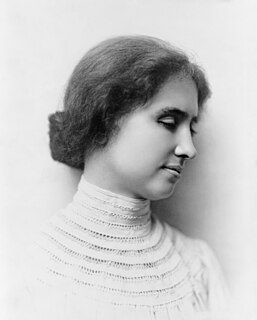 W
WDeafblindness is the condition of little or no useful hearing and little or no useful sight. There are different degrees of vision loss and auditory loss within each individual, thus making the deafblind community unique with many types of deafblindness involved. Because of this diversity, each deafblind individual's needs regarding lifestyle, communication, education, and work need to be addressed based on their degree of dual-modality deprivation in order to improve their ability to live independently. In 1994, it was estimated that roughly 35,000–40,000 United States residents are medically deafblind. Helen Keller was a well-known example of a deafblind individual.
 W
WEl Deafo is a graphic novel written and illustrated by Cece Bell. The book is a loose autobiographical account of Bell's childhood and living with her deafness. However, the characters in the book are all bunnies. Cece Bell, in an interview with the Horn Book Magazine, states "What are bunnies known for? Big ears; excellent hearing," rendering her choice of characters and their deafness ironic.
 W
WDiabetes and deafness (DAD) or maternally inherited diabetes and deafness (MIDD) or mitochondrial diabetes is a subtype of diabetes which is caused from a point mutation at position 3243 in human mitochondrial DNA, which consists of a circular genome. This affects the gene encoding tRNALeu. Because mitochondrial DNA is contributed to the embryo by the oocyte and not by spermatozoa, this disease is inherited from maternal family members only. As indicated by the name, MIDD is characterized by diabetes and sensorineural hearing loss.
 W
WIdentification of a hearing loss is usually conducted by a general practitioner medical doctor, otolaryngologist, certified and licensed audiologist, school or industrial audiometrist, or other audiometric technician. Diagnosis of the cause of a hearing loss is carried out by a specialist physician or otorhinolaryngologist.
 W
WEar trumpets are tubular or funnel-shaped devices which collect sound waves and lead them into the ear. They were used as hearing aids, resulting in a strengthening of the sound energy impact to the eardrum and thus improved hearing for a deaf or hard-of-hearing individual. Ear trumpets were made of sheet metal, silver, wood, snail shells or animal horns. They have largely been replaced in wealthier areas of the world by modern hearing aid technology that is much smaller and less obtrusive, albeit more expensive.
 W
WHealing the deaf mute of Decapolis is one of the miracles of Jesus in the Gospels, namely Mark 7:31-37. Its narration offers many parallels with the healing of the blind man of Bethsaida in Mark 8:22-26.
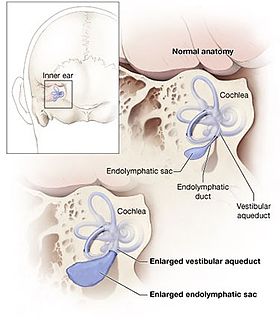 W
WPendred syndrome is a genetic disorder leading to congenital bilateral sensorineural hearing loss and goitre with euthyroid or mild hypothyroidism. There is no specific treatment, other than supportive measures for the hearing loss and thyroid hormone supplementation in case of hypothyroidism. It is named after Dr Vaughan Pendred (1869–1946), the British doctor who first described the condition in an Irish family living in Durham in 1896. It accounts for 7.5% to 15% of all cases of congenital deafness.
 W
WJacob Rodrigues Pereira or Jacob Rodrigue Péreire was an academic and the first teacher of deaf-mutes in France.
 W
WHearing loss is a partial or total inability to hear. Hearing loss may be present at birth or acquired at any time afterwards. Hearing loss may occur in one or both ears. In children, hearing problems can affect the ability to learn spoken language, and in adults it can create difficulties with social interaction and at work. Hearing loss can be temporary or permanent. Hearing loss related to age usually affects both ears and is due to cochlear hair cell loss. In some people, particularly older people, hearing loss can result in loneliness. Deaf people usually have little to no hearing.
 W
WThe Rear Window captioning system (RWC) is a method for presenting, through captions, a transcript of the audio portion of a film in theatres for deaf and hard-of-hearing people. The system was co-developed by WGBH and Rufus Butler Seder.
 W
WSign languages are languages that use the visual-manual modality to convey meaning. Sign languages are expressed through manual articulations in combination with non-manual elements. Sign languages are full-fledged natural languages with their own grammar and lexicon. Sign languages are not universal and they are not mutually intelligible with each other, although there are also striking similarities among sign languages.
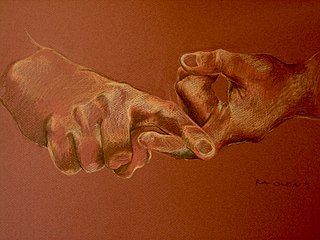 W
WPeople with extreme hearing loss may communicate through sign languages. Sign languages convey meaning through manual communication and body language instead of acoustically conveyed sound patterns. This involves the simultaneous combination of hand shapes, orientation and movement of the hands, arms or body, and facial expressions to express a speaker's thoughts. "Sign languages are based on the idea that vision is the most useful tool a deaf person has to communicate and receive information".
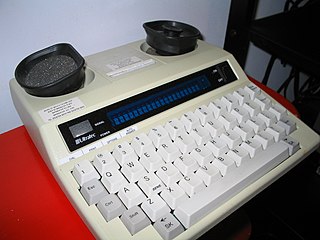 W
WA telecommunications device for the deaf (TDD) is a teleprinter, an electronic device for text communication over a telephone line, that is designed for use by persons with hearing or speech difficulties. Other names for the device include teletypewriter (TTY), textphone, and minicom.
 W
WA telecommunications relay service, also known as TRS, relay service, or IP-relay, or Web-based relay service, is an operator service that allows people who are deaf, hard of hearing, deafblind, or have a speech disorder to place calls to standard telephone users via a keyboard or assistive device. Originally, relay services were designed to be connected through a TDD, teletypewriter (TTY) or other assistive telephone device. Services gradually have expanded to include almost any real-time text capable technology such as a personal computer, laptop, mobile phone, PDA, and many other devices. The first TTY was invented by deaf scientist Robert Weitbrecht in 1964. The first relay service was established in 1974 by Converse Communications of Connecticut.
 W
WVestibulocochlear dysfunction progressive familial, known also as familial progressive vestibulocochlear dysfunction is an autosomal dominant disease that results in sensorineural hearing loss and vestibular areflexia. Patients report feelings of vague dissiness, blurred vision, dysequilibrium in the dark, and progressive hearing impairment.
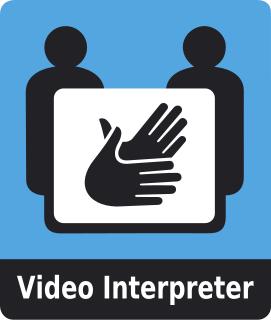 W
WA video relay service (VRS), also sometimes known as a video interpreting service (VIS), is a video telecommunication service that allows deaf, hard-of-hearing, and speech-impaired (D-HOH-SI) individuals to communicate over video telephones and similar technologies with hearing people in real-time, via a sign language interpreter.
 W
WVisible Speech is a system of phonetic symbols developed by British linguist Alexander Melville Bell in 1867 to represent the position of the speech organs in articulating sounds. Bell was known internationally as a teacher of speech and proper elocution and an author of books on the subject. The system is composed of symbols that show the position and movement of the throat, tongue, and lips as they produce the sounds of language, and it is a type of phonetic notation. The system was used to aid the deaf in learning to speak.
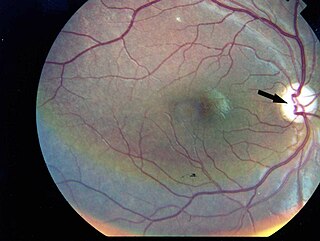 W
WWolfram syndrome, also called DIDMOAD, is a rare autosomal-recessive genetic disorder that causes childhood-onset diabetes mellitus, optic atrophy, and deafness as well as various other possible disorders.